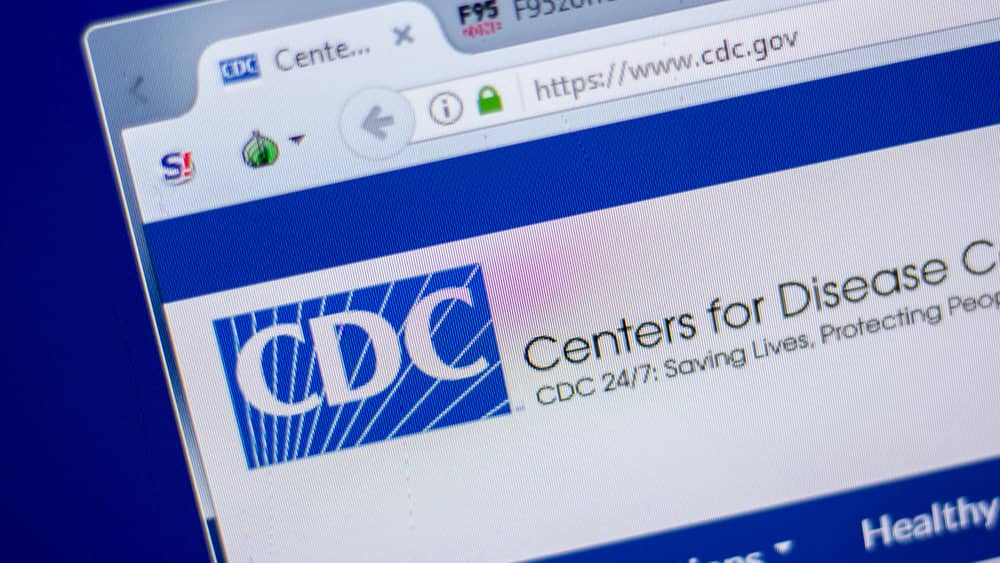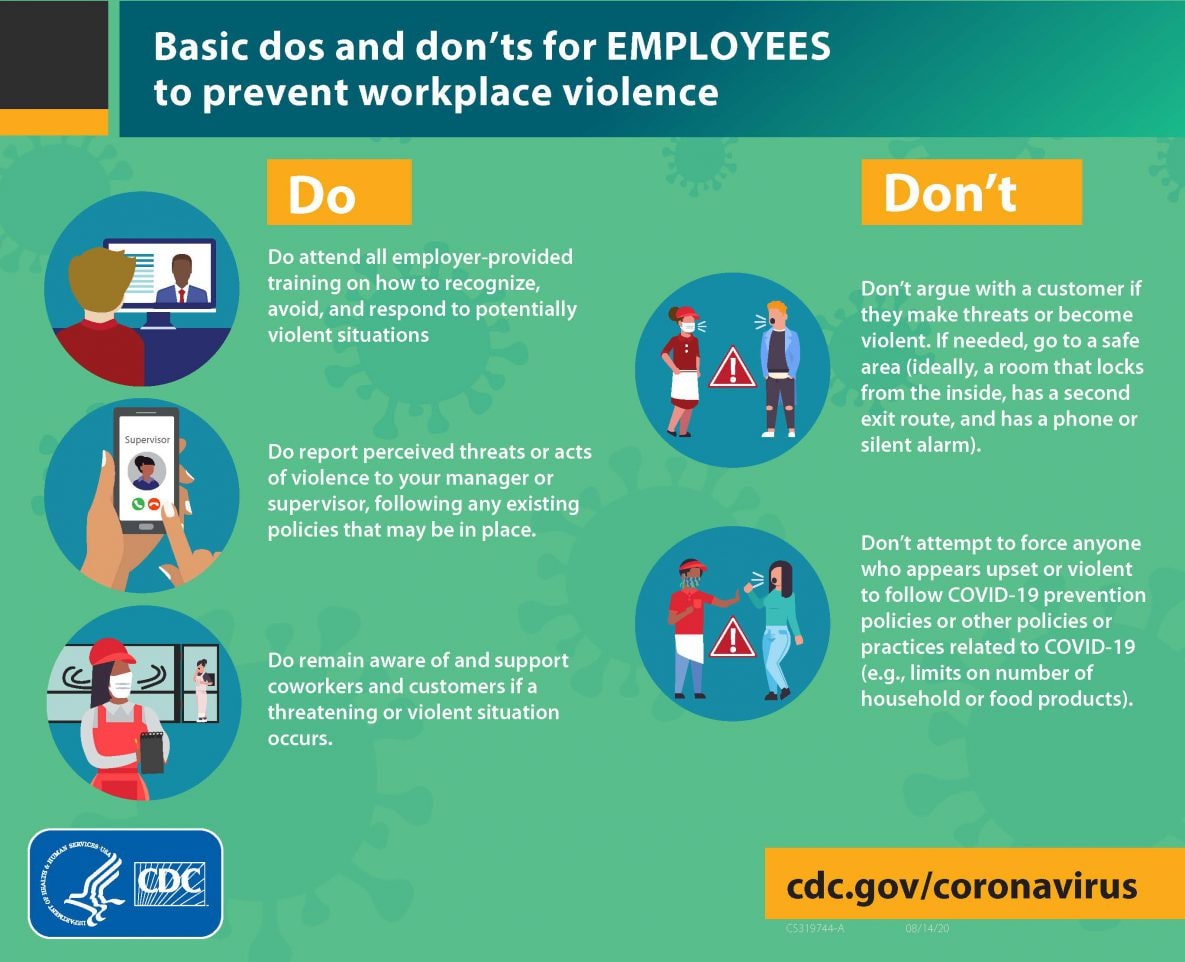
This information is intended for use by employers and employees in retail, services, and other customer-based businesses, according to the Centers for Disease Control and Prevention. Retail or service businesses sell goods and provide services to the public and include department stores, grocery stores, gas stations, and restaurants. These businesses are open and have started state-directed, municipality-directed, and company-directed Coronavirus Disease 2019 (COVID-19) prevention policies and practices to minimize the spread of the virus among employees and customers.
This information is not intended to address every business setting. A business may need to adapt these strategies based on its physical space, staffing, and other factors.
Purpose: This webpage offers strategies to limit violence towards workers that may occur when businesses put in place policies and practices to help minimize the spread of COVID-19 among employees and customers. These policies may include requiring masks to be worn by employees and customers, asking customers to follow social distancing rules, and setting limits on the number of customers allowed in a business facility at one time.
The Centers for Disease Control and Prevention (CDC) may update this page periodically. Please check the CDC COVID-19 website regularly for updated guidance.
Please check the CDC Interim Guidance for Businesses and Employers Responding to Coronavirus Disease 2019 (COVID-19) for general business guidance on preventing COVID-19.
Workplace violence is “violent acts, including physical assaults and threats of assault, directed toward persons at work or on duty.” Workplace violence includes
- Threat: verbal, written, and physical expressions that could reasonably be interpreted as intending to cause harm.
- Verbal assault: yelling, swearing, insulting, or bullying another person with the intent of hurting or causing harm. Unlike physical assaults, the intent is not necessarily to cause physical harm, but negative emotions of the person being assaulted.
- Physical assault: hitting, slapping, kicking, pushing, choking, grabbing, or other physical contact with the intent of causing injury or harm.
Conflict resolution is the process of finding a peaceful end to a conflict or argument.
A nonviolent response is a peaceful approach to address a situation in which a person is aggressive or threatening. This technique involves remaining calm, giving a person space, making sure other people are in the area, and not touching the person or trying to forcibly remove them.
Workplace violence and COVID-19
Workers may be threatened and assaulted as businesses try to put into place COVID-19 prevention policies and practices (e.g., mandatory use of masks, social distancing, and limits on the number of customers allowed in a business). These threats and assaults can come from customers, other employees, or employers. Based on a 1996 Current Intelligence Bulletin, threats and assaults can happen in any workplace, but may be more likely to occur in retail, services (e.g., restaurants), and other customer- or client-based businesses.
Employers can take action to prevent workplace violence
Offer customers options to minimize their contact with others and promote social distancing. These options can include curbside pick-up; personal shoppers; home delivery for groceries, food, and other services; and alternative shopping hours.
Post signs that let customers know about policies for wearing masks, social distancing, and the maximum number of people allowed in a business facility.
Advertise COVID-19-related policies on the business website.
Provide employee training on threat recognition, conflict resolution, nonviolent response, and on any other relevant topics related to workplace violence response.
Put in place steps to assess and respond to workplace violence. Response will depend on the severity of the violence and on the size and structure of the business. Possible responses may include reporting to a manager or supervisor on-duty, calling security, or calling 911.
Remain aware of and support employees and customers if a threatening or violent situation occurs.

Assign two workers to work as a team to encourage COVID-19 prevention policies be followed, if staffing permits.
Install security systems (e.g., panic buttons, cameras, alarms) and train employees on how to use them.
Identify a safe area for employees to go to if they feel they are in danger (e.g., a room that locks from the inside, has a second exit route, and has a phone or silent alarm).
Provide Employee Training: Warning Signs & Response
Employee training on workplace violence typically covers definitions and types of violence, risk factors and warning signs for violence, prevention strategies, and ways to respond to threatening, potentially violent, or violent situations.
Warning Signs
As part of training, employees often learn verbal and non-verbal cues that may be warning signs of possible violence. Verbal cues can include speaking loudly or swearing. Non-verbal cues can include clenched fists, heavy breathing, fixed stare, and pacing, among other behaviors. The more cues shown, the greater the risk of violence.
Response
During training, employees also learn how to appropriately respond to potentially violent or violent situations. Responses range from paying attention to a person and maintaining non-threatening eye contact to using supportive body language and avoiding threatening gestures, such as finger pointing or crossed-arms.







